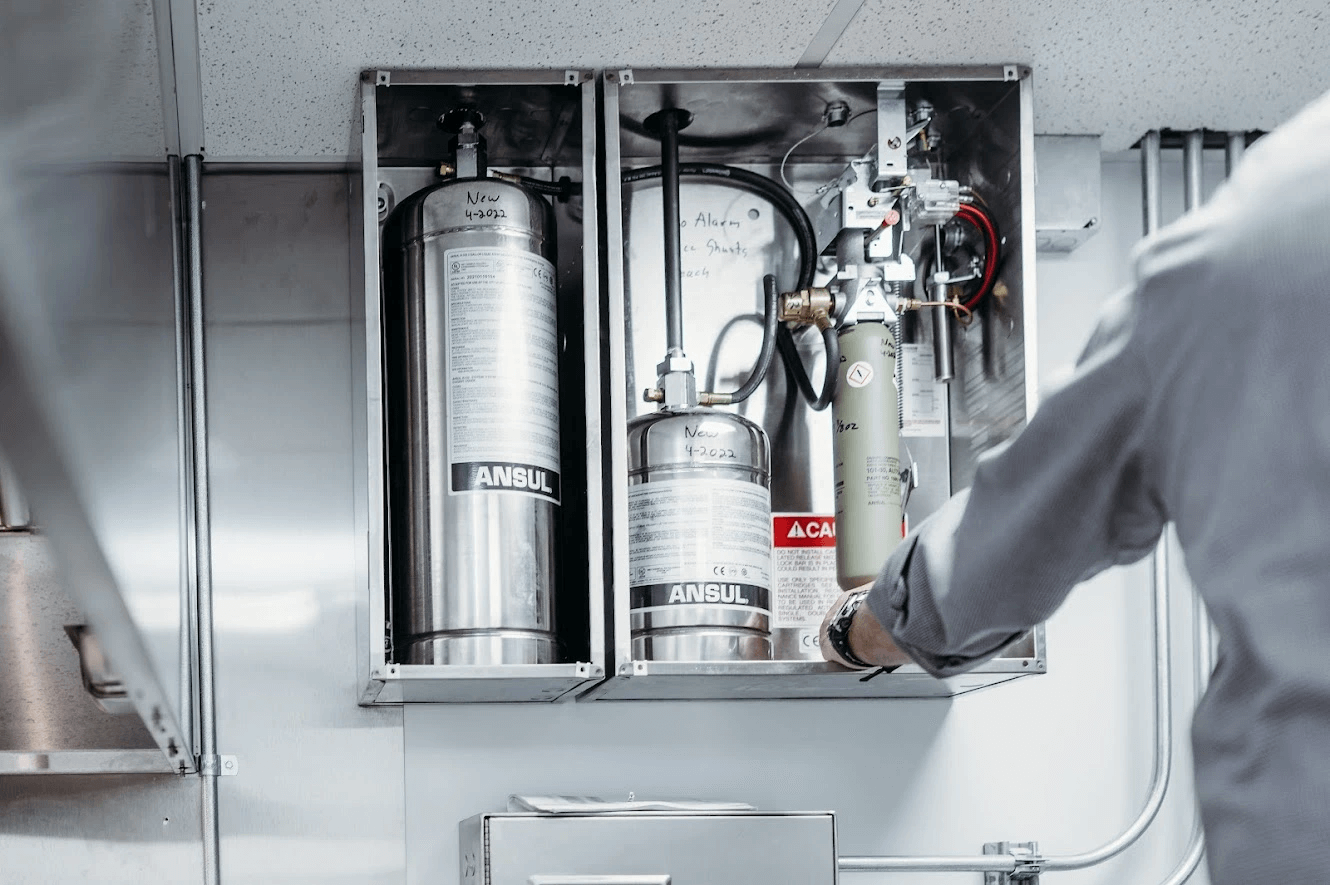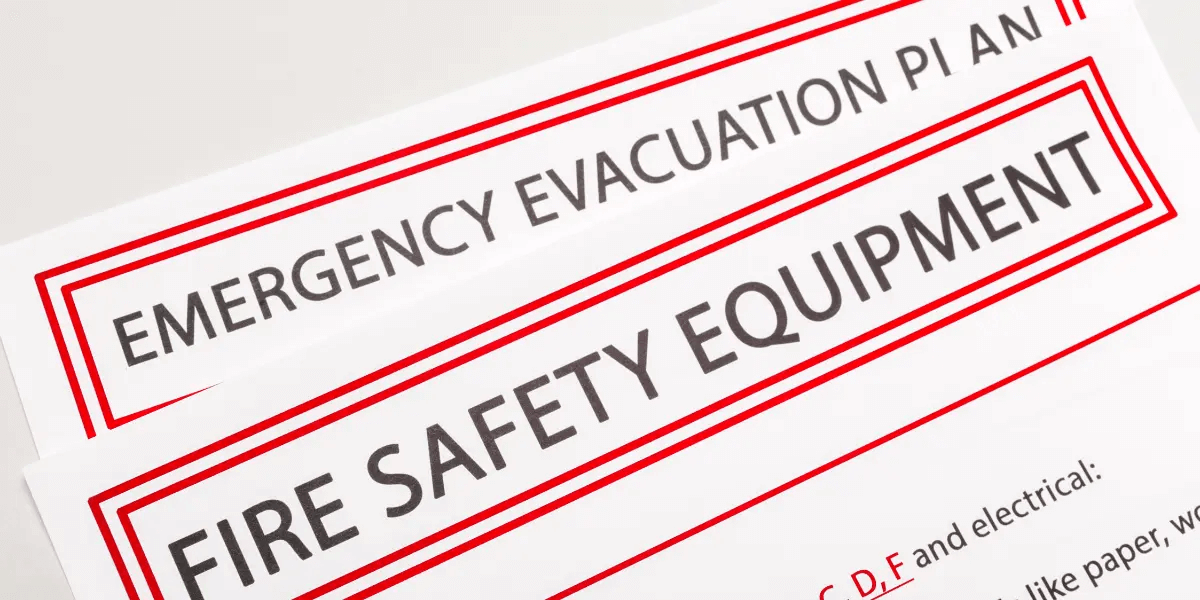What is a Fire Prevention System? | State College, PA
Fire safety is paramount, especially when it comes to safeguarding homes and businesses from potential hazards. Central to this effort is the fire prevention system, a key component in averting fires before they ignite.
This blog aims to unravel the complexities surrounding fire prevention systems. What exactly is a fire prevention system? How does it function? How is it different from fire protection systems?
If you're keen on learning how to proactively manage fire risks, you've come to the right spot. We're here to address all of the questions above and more!
Key Takeaways
- Fire prevention systems play a crucial role in identifying and mitigating potential fire hazards to prevent fires before they start.
- A comprehensive fire safety strategy includes fire prevention, protection, and suppression systems, each serving a unique function in safeguarding lives and property.
- Consulting with fire safety experts like Swartz Fire & Safety is essential for implementing effective fire protection and suppression solutions tailored to specific needs.
A Deeper Look at Fire Prevention Systems

A fire prevention system is specifically designed not to fight fires but to ensure they never occur. The system's primary goal is to identify and eliminate potential fire hazards, making it a fundamental component of safeguarding both homes and businesses.
These systems are comprehensive, involving various components and strategies designed to mitigate the risk of fire. They encompass everything from electrical safety measures to the control of flammable materials and beyond.
Here’s a breakdown of the key elements that make up effective fire prevention systems:
Electrical safety measures
One critical aspect of fire prevention is electrical safety. This includes regular inspections of wiring, avoiding overloading outlets, and making sure that electrical equipment is in good working condition.
Using circuit breakers and maintaining clear access to electrical panels also fall under this category, all aimed at reducing the risk of electrical fires.
Proper storage and handling of flammable materials and gases
Flammable materials and gases pose a significant fire risk if not stored or handled correctly. Fire prevention systems emphasize the importance of proper storage solutions, such as flame-proof cabinets for chemicals and safe gas cylinder storage areas.
These measures help to minimize the chance of a fire starting from improperly stored hazardous materials.
Dust control in specific industries
In industries where combustible dust is a concern, such as woodworking, food processing, or metalworking, dust control is a vital component of fire prevention.
Implementing dust collection systems and regular cleaning protocols can drastically reduce the risk of dust-related fires, which can be highly explosive and difficult to control once ignited.
Safe practices for hot work operations
Hot work operations, including welding, cutting, and other activities that generate sparks or flames, require strict safety measures.
Fire prevention systems in these contexts include the use of fire-resistant barriers, designated hot work areas away from flammable materials, and permits that ensure all safety checks are completed before work begins.
Maintenance and safety checks for equipment and machinery
Regular maintenance and safety checks are crucial to preventing fires caused by equipment and machinery. This involves inspecting machines for signs of wear and tear, ensuring proper lubrication to reduce friction heat, and repairing any faults promptly to avoid overheating or sparks that could ignite a fire.
When you incorporate these components, fire prevention systems provide a robust defense against the start of fires.
Fire Prevention Plans

When it comes to fire safety, having a plan is essential. This holds especially true in workplaces where the stakes are high and the well-being of many hangs in the balance. Fire prevention plans are a regulatory requirement and a significant part of a proactive approach to fire safety.
A well-crafted fire prevention plan should satisfy OSHA requirements by actively safeguarding lives, property, and businesses from the devastating impact of fires. These plans are vital for identifying potential fire hazards and establishing protocols to mitigate these risks before they lead to a disaster.
OSHA’s requirements
OSHA (Occupational Safety and Health Administration) plays a pivotal role in ensuring workplace safety, including fire prevention.
According to OSHA, a comprehensive fire prevention plan must be documented, maintained, and available to employees for review.
But what exactly should this plan cover? Here are the elements OSHA mandates:
- Identification of major fire hazards - Every workplace is unique, with its own set of potential fire risks. A fire prevention plan must clearly outline these hazards, including the handling and storage procedures to minimize risk.
- Handling of flammable and combustible waste - Accumulations of flammable materials can significantly increase a workplace's fire risk. Effective plans detail how to manage and dispose of these materials safely.
- Maintenance of protective equipment - From fire extinguishers to fire sprinkler systems, maintaining fire safety equipment is non-negotiable. The plan should specify the maintenance schedules and the responsible parties.
- Assignment of responsibilities - Fire safety is a team effort. A plan must identify employees tasked with maintaining equipment and controlling fuel source hazards, ensuring accountability and clarity in roles.
- Employee training and awareness - Knowledge is power, especially when it comes to fire safety. Training programs and awareness campaigns are crucial components of a fire prevention plan, empowering employees to act swiftly and safely in case of an emergency.
- Crafting a comprehensive fire prevention plan - Creating an effective fire prevention plan goes beyond ticking boxes on a compliance checklist. It involves a thorough assessment of your workplace's specific risks and tailoring strategies to address these challenges.
Here are some additional elements that, while not mandated by OSHA, can significantly enhance your fire prevention efforts:
- Regular risk assessments: Conduct periodic evaluations of your workplace to identify new risks or changes in existing hazards.
- Clear communication channels: Establish protocols for reporting potential fire hazards and ensuring these concerns are promptly addressed.
- Emergency exit routes: Mark all exit routes clearly and ensure they remain unobstructed at all times.
- Drills and simulations: Regularly scheduled fire drills help reinforce evacuation procedures and identify any areas for improvement in your emergency response plan.
Incorporating these elements into your fire prevention plan not only meets regulatory requirements but also builds a culture of safety and preparedness within your organization.
The Different Fire Systems
Fire prevention is only one part of a complete fire safety system. The other two serve to control or extinguish fires.
A fire safety system can be categorized into these three: fire prevention systems, fire protection systems, and fire suppression systems.
Fire prevention systems
Fire prevention systems focus on stopping fires from occurring in the first place. They're designed to identify and mitigate potential fire hazards, from ensuring electrical equipment isn't overloaded to the proper storage of flammable materials.
Regular risk assessments and maintaining clear fire exits are part of this proactive approach.
Fire protection systems
Fire protection systems are designed to contain a fire and prevent it from spreading. They can offer passive fire protection, like fire doors and intumescent coatings that seal off areas to slow the spread of smoke and flames, or active protection, such as sprinkler systems that spring into action when they detect heat or smoke.
Fire suppression systems
Fire suppression systems step in when prevention and protection measures are bypassed by a fire. These systems, often comprising dry chemical agents or fire extinguishers, aim to quickly extinguish fires, reducing potential damage and ensuring the safety of building occupants.
Why You Need All Three Fire Safety Systems
While fire prevention systems play a crucial role in mitigating the risk of fires, fire protection and suppression systems are equally important. They provide a critical safety net that protects lives and minimizes damage if a fire breaks out.
The necessity of fire protection systems
Fire protection systems form the first line of defense once a fire ignites. They're designed to contain the fire, prevent it from spreading, and ultimately, save lives and protect property.
Examples of a fire protection system are passive elements like fire doors and active mechanisms such as sprinkler systems.
In many instances, the quick activation of a sprinkler system can significantly reduce the severity of a fire, allowing occupants more time to evacuate and limiting the fire's damage to the building.
The critical role of fire suppression systems
When prevention and protection strategies are not enough to control a fire, fire suppression systems become invaluable. These systems are designed to extinguish fires rapidly.
They are particularly crucial in spaces that contain valuable assets, sensitive equipment, or hazardous materials, where using water to extinguish a fire could cause additional damage or pose a significant risk.
Let Swartz Fire & Safety Equip You
The key to effective fire safety is a comprehensive approach that includes both prevention and readiness to respond. A combination of fire prevention, protection, and suppression systems ensures that you are not only working to prevent fires but also prepared to deal with them effectively when they occur.
Swartz Fire & Safety understands the nuances of fire safety and the importance of a comprehensive approach. Our expertise in fire protection and suppression systems makes us your ideal partner in safeguarding your property and occupants against the threat of fire.
We're here to help, whether you need to install new systems, upgrade existing ones, or simply seek advice on the best fire safety practices.
Don't wait for a fire to test your preparedness. Contact Swartz Fire & Safety today to ensure that your property is equipped with the most effective fire protection and suppression systems. Let us help you protect what matters most.
Frequently Asked Questions
What are the 4 types of fire protection systems?
The four types of fire protection systems are fire alarms, sprinkler systems, fire extinguishers, and passive fire protection measures such as fire doors and fire-resistant walls.
What are 5 ways to prevent fires?
Five ways to prevent fires include regular maintenance and safety checks of electrical equipment, proper storage of flammable materials, controlling dust in industrial settings, adhering to safe practices for hot work operations, and enforcing smoking bans indoors.
What are examples of fire protection systems?
Examples of fire protection systems include sprinkler systems, fire alarms, fire extinguishers, fire-resistant doors, and emergency lighting.
What is a fire prevention program?
A fire prevention program is a comprehensive strategy implemented by organizations to identify, assess, and mitigate potential fire hazards, ensuring the safety of occupants and the protection of property.


